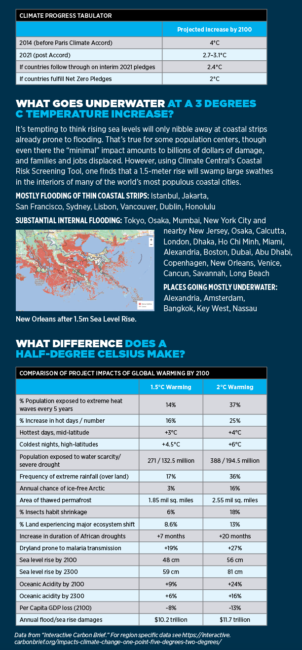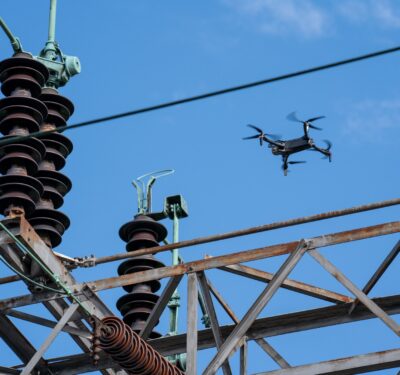The temperature results are in and the planet is heating up, driven by the burning of heat-trapping fossil fuels. Governments are belatedly working to address the threat by advancing green technologies, but the barriers to success are daunting.
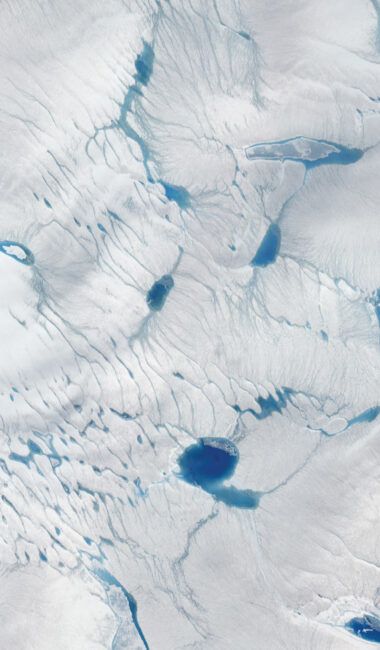
Climate change, for decades a seemingly distant eventuality, has by the 2020s become a manifest reality, one that ominously promises only to worsen in the remainder of this century.
Already, the last seven years have been the seven hottest on record. The sea level has already risen four inches since 1993. As temperatures rise, fires and hurricanes are becoming more destructive than ever.
Such globe-spanning trends under natural circumstances play out gradually over centuries and millennia, not year by year. But they are the product of bustling human expansion and industry across the globe, thanks to which there are more humans living longer lives, with access to greater amenities, than ever before.
Unfortunately, the fossil fuels that have made quality of life improvements possible have also multiplied emissions of heat-trapping carbon dioxide and methane to the point their accumulating impact threatens to undermine much of which has been achieved.
Fortunately, halting the runaway trend can be achieved by aggressively adopting efficient alternatives to energy-rich fossil fuels we still depend upon. And by the 2020s, world governments are belatedly taking seriously the tangible threats posed by climate change and investing billions of dollars to do just that. In turn, the private sector is responding to public incentives by not only advancing green technologies, but finally manufacturing them at scale.
Unfortunately, the investments in transitioning to a zero net-emissions economy remain outstripped by the huge scope of the problem and the consequences, both in economic damages and human lives lost to famine, fires and flooding.
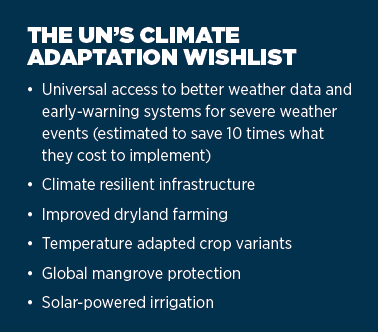
CARBON DIOXIDE AND GLOBAL WARMING
The largest contributor to the climate crisis are emissions of carbon dioxide (CO2). For most of recent history, carbon dioxide levels hovered around 280 parts per million (ppm). But ever since the onset of industrialization in the mid-18th century England, that percentage has risen by 50%. In the last 20 years alone, we’ve gone from 365 to over 410 ppm, with a record 420-421 ppm reported in April through June of 2022.
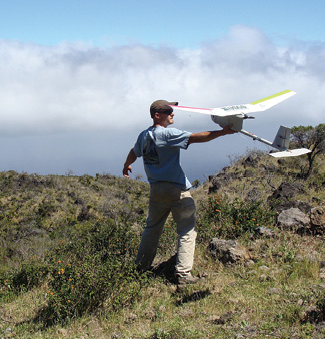
This is a problem because CO2 and other greenhouse gasses trap solar radiation within the Earth’s atmosphere, causing global temperatures to rise by 1.1 degrees Celsius by 2022. Before even considering secondary effects, this temperature increase has negative impacts, as the global average actually implies much larger dangerous temperature spikes in some areas, resulting in increasingly frequent and lethal heat waves and droughts.
Unfortunately, much worse could yet happen: The Earth’s currently on track for warming around 3°C by 2100. The best-case achievable target would be to reduce global warming to just 1.5°C, averting many of the most destructive possible consequences of climate change. However, given the current rate of progress, attaining even 2°C will require a greatly enhanced effort.
Heatwaves are poised to become more frequent and intense. For example, if warming is curbed at 2°C, heat related deaths in Australia are still projected to increase from 142 to 600 annually. Every half-degree Celsius uptick also increases atmospheric moisture by 4%, increasing the likelihood of torrential rain storms. Humid heatwaves could actually prove even more lethal, as they inhibit temperature-regulation via sweating.
In dryer climates, increased temperatures make fires more likely to spread out of control and cause massive damage. Five of the six largest fires recorded took place in California and Oregon in 2020. Fires in 2017 and 2018 caused $40 billion in damage to the Sunshine State, while a year later Australian bushfires consumed 94,000 square miles, raising the temperature of the stratosphere across the globe, and causing the rough equivalent of $58 billion USD in damage.
Of course, fires, heatwaves and flooding will have huge negative secondary effects on health outcomes and the economy as health care facilities, energy infrastructure and homes are destroyed and jobs and lives disrupted. For example, a 2017 study by the National Bureau of Economic Research projected the U.S. would lose more than 10% of GDP should current warming trends be sustained to 2100.
The massive increase in carbon emissions is also altering the chemistry of the world’s oceans, as it transforms into carbonic acid (H2CO3), having already increased the oceans acidity by 30%. Current trendlines suggest PH could fall from 8.2 to as low as 7.75 by 2100. Such seemingly small changes can be fatal to many kinds of marine life. For example, CO2 levels also threaten coral reefs, with reef growth expected to stop at 450 ppm and existing reefs to begin dissolving at 550 ppm.
DEFORESTATION
A secondary factor contributing to rising CO2 levels is deforestation. Trees naturally absorb and sequester CO2 in their trunks or roots—but when cut, their sequestered carbon is released. Peatlands also sequester CO2, which is released when the bogs are drained. Unsurprisingly, deforestation has been driven by human activities, particularly clearing lands for agricultural purposes (beef, soybeans and palm oil being the chief culprits) as well as the lumber industry. However, deforestation currently accounts for only a roughly 10% share of climate change, primarily because the CO2 contributions by fossil fuels are growing that much faster.
METHANE—GREENHOUSE GAS SIDEKICK
Methane (CH4) is the second biggest contributor to global warming after CO2, greatly outstripping tertiary greenhouse gasses such as nitrous oxide (N2O). Though more diffuse, methane traps 81 times more heat in the atmosphere per unit than CO2 does in a 20-year timespan. While methane emissions are produced naturally by wetlands, currently about 60% are due to human activity, coming from livestock, flooded rice fields, waste disposal and fossil fuel collection.
At the 2021 COP26 climate summit, 105 countries pledged to reduce methane emissions by 30% by 2030, including the United States, all EU member states and Brazil, Mexico, Australia and Nigeria. Unfortunately, China, India and Russia—the world’s top three methane producers—and Iran (the eighth largest) have not made methane pledges. Due to its greater per-unit impact than CO2, methane removal may offer greater bang-for-buck at reducing climate impacts, particularly serving as carbon offsets. A British government study found reducing methane emissions by 40% would shave .4-1°Celsius from global warming by 2050.

Unfortunately, there’s been less investment in methane removal technologies. Another approach is to tackle emitters of methane, including leaky undersea pipelines. As noted in Inside Unmanned Systems’ 2022 energy issue, deployment of UUV-type autonomous drones could allow for much more extensive inspection and repairs to compromised undersea pipelines. There is much variability in how well companies control methane emissions—according to the EPA, many of the biggest methane emitters are relatively small, obscure players in the energy industry.
The Earth’s Vital Signs
Warming Sea Water—The Earth’s oceans and other bodies of water absorb 90% of global warming increases—and that is reflected in a massive increase in solar energy absorbed from low double digits in the 1950s to roughly 337 zettajoules today. That buildup poses several problems distinct from atmospheric warming and melting glaciers. For one, an increase of 2-3° Celsius can result in a 60-100% increase in the destructiveness of extreme weather events like Hurricane Michael. As seawater heats up, it also expands, a phenomenon that accounts for one-third of the observed sea-level rise since 2004.
Earth’s Melting Ice—Rising atmospheric and water temperatures both contribute to melting of the Antarctic and Greenland ice sheets, which store between them two-thirds of all fresh water on Earth. Since 2002, these have been shrinking at an alarming rate, with Antarctica losing 151-billion metric tons annually and Greenland, 273—contributing to one-third of the planet’s sea rise. Should climate change remain in the 2-3° range, damage to the ice sheets will likely be irreversible, requiring millennia to repair. For example, the total loss of Greenland’s ice sheet would eventually add 7 meters to sea level across the globe. Meanwhile, the minimum extent of Arctic Sea Ice has been shrinking 12.5% every decade, and already has gone from 7.54 million square kilometers in 1980 to 4.67 million in 2022.
Sea Level Rising—Since 1993, sea level has risen 20 centimeters (4 inches)—an unprecedent rate of growth in the last 2,500 years. But our current temperature rise of 3° C by 2100 could result in an overall increase of 1.5 meters.
The effects of sea-level rise aren’t equally distributed—they’re greater than average for countries near the equator, and milder at higher latitudes. In fact, the redistribution of water away from melting polar ice sheets toward the equator will self-reinforce by increasing the equatorial region’s general gravitational pull.

The Climate Change Movement in the 2020s
The Paris Agreement of 2014, signed by 195 parties, is currently the cornerstone of intergovernmental efforts to mitigate climate change. The only major fossil fuel emitter not participating is Iran, though the U.S. dropped out from 2019-2020 under the Trump administration before rejoining in 2021.
Though the pledges of climate change progress made by signatory states are reviewed to measure progress, the agreement doesn’t impose consequences for failing to meet them. Many critics therefore argue the Paris agreement does too little, while on the opposing side there remain those hostile even to symbolic international commitments.
Despite its limitation, the Paris agreement appears correlated to several positive trends. For example, 76% of plans to build new coal plants have been canceled since 2014. Furthermore, the projected global temperature rise has already fallen from 4 to roughly 3° Celsius since 2014.
An additional factor is that developing countries like India, seeking to improve standards of living for their populations, want financial compensation to pay for their transition to green energy from wealthier developed countries, which have already reaped the benefits of two centuries of fossil-fuel based industrialization.
In principle, developed countries agreed to provide $100 billion annually in climate change financing to developing countries. In practice, financing only reached $83 billion in 2020. Meanwhile, at the COP27 conference this November, attendees concluded the actual total needed by developing countries was closer to $1 trillion annually.
Global Warming and the Pentagon
One organization that can’t afford to keep its head in the sand regarding climate change is the U.S. Department of Defense. That’s because its troops and bases deployed across the globe are already getting slammed by more destructive hurricanes and floods, and baked in the field by rising temperatures.
In one notable incident, Hurricane Michael in 2018 damaged or destroyed 95% of buildings in Tyndall Air Force Base in Florida, which, among other roles, served as the primary training center for F-22 Raptor stealth fighters. Meteorologists characterized Michael’s destructiveness as clearly induced by global warming.
Seventeen irreplaceable F-22s—which the Air Force says cost $143 million each—that couldn’t be moved in time were damaged, and despite $5 billion spent on reconstruction, the Raptor training center was not resurrected. The event likely influenced the service’s request to retire one-fifth of its F-22s in 2022.
The new National Defense Strategy released in October 2022 elevates climate change to a major national security threat due to its deleterious effects on readiness and capability. The Pentagon also holds melting Arctic ice responsible for increased security competition with Russia near the north pole, and believes more generally climate change will foster an increase in resource-driven armed conflicts as well as humanitarian disasters abroad and domestically, which will force it to commit more and more troops to crisis and disaster response.
The U.S. military also remains the greatest institutional generator of carbon emissions—in 2022 hitting 51 million metric tons of emissions, though that’s a substantial decline from a peak of 85 million tons of CO2 emitted in 2004. Fortunately, energy efficiency is a desirable quality in military platforms even absent climate change considerations, as it gives increased range and endurance and reduces logistical burdens.
CLIMATE ADAPTATION
Even in the best-case scenario of just 1.5° C warming, the negative impacts of climate change will continue to worsen. That means everyone from city planners to architects and gadget designers must take those anticipated impacts into account: designing devices for higher heat tolerances, building further inland with bigger levies, and improving communal resilience against droughts, famine and wildfires like those that have ravaged Australia, California and France in recent years.
Adaptation remains relatively under-resourced. Developing countries are spending roughly $70 billion annually on adaptaion but are receiving only $16.8 billion in climate adaptation assistance.
Unfortunately, skimping on climate adaptation is penny wise and pound foolish. According to the UN, $1.8 trillion in spending on adaptation now could save $7.1 trillion down the line, and increase agricultural yields by 30% by 2050. Conversely, if insufficient adaptation measures are taken, the number of people without adequate year-round access to drinking water could increase 39% to 5 billion.
TECHNOLOGY, CLIMATE CHANGE AND THE ROLE OF UNMANNED SYSTEMS
The transition away from fossil fuels without major losses in capability and quality of life is only possible thanks to the improved efficiency of alternative energy sources, including reducing their costs. These include new economies of scale achieved in mass production of solar panels, energy-dense batteries and electrically powered vehicles. Rising gas prices also improve the relative attractiveness of alternatives.
Unmanned systems are among the technologies contributing to enhanced efficiency and lower costs. Here’s why, and how:
- They’re smaller and lighter, and thus have reduced energetic requirements compared to manned platforms for which they can substitute.
- Many use electrical or other environmentally friendly propulsion systems that release fewer greenhouse gasses.
- They can perform routine inspections and maintenance tasks for geographically dispersed and often difficult to access solar and wind power facilities.
- Uncrewed platforms may even be harnessed to produce energy.
- They can perform tedious but important data collection on key environmental variables.
Ultimately, there is no single magic bullet to fixing the interlocking challenges climate change poses to humanity. Reducing the extent of warming and its many negative impacts will require implementation of diverse economic and political initiatives and technological innovations. The costs of accelerating that transition may be considerable, but remain much lower than those unavoidably incurred for failing to act until it’s too late.
